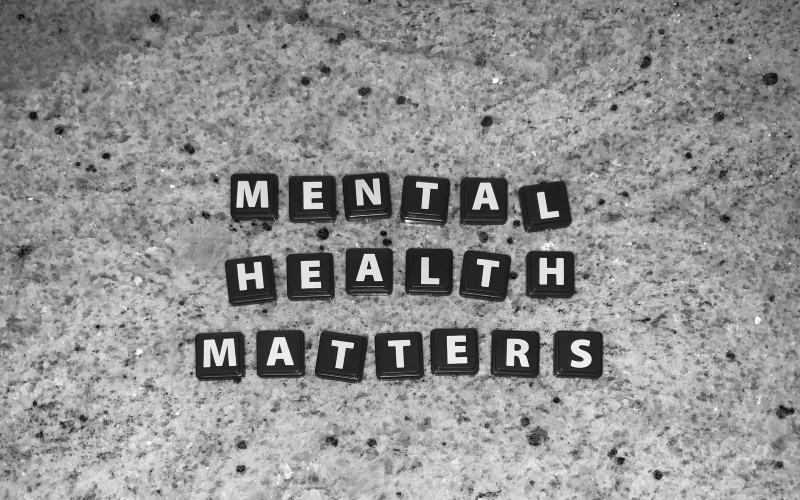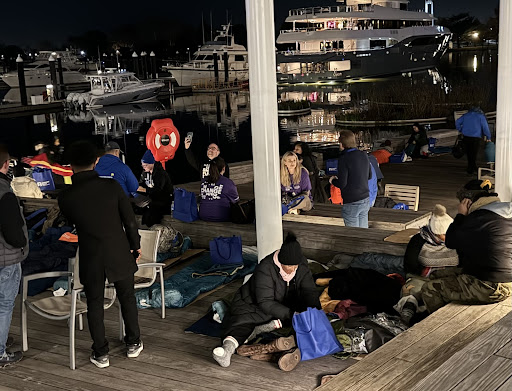There is an air of relaxation at Isaiah House. It’s quiet, as a few guests munch on freshly popped popcorn on the soft couches, and a few more settle into a game of cards.
It’s not always so calm, says mental health specialist Jamie Bingner. In fact, Isaiah House is often a place of great animation, a vibrant retreat from the struggles of the street.
A day program run by So Others Might Eat (SOME), Isaiah House offers social gatherings, peerled activities, therapy groups and life skill classes geared to help people coping with mental illness and homelessness in rebuilding their lives. There is pain here but there is also healing, and it is easy to find positivity and aspiration bouncing off the homey walls.
Mental illness is a major contributing factor to homelessness, research shows. According to this year’s annual homeless count for the District, 22% of the 9,200 homeless adults surveyed reported suffering from a severe mental illness. And according to another study of patients in Washington, D.C., conducted by Kathleen Dockett of the University of the District of Columbia, 40% of the homeless population suffered from a mental illness.
The profound nature of the mental illnesses that affect many homeless people, together with the nature of homelessness itself, present tremendous challenges to nonprofit organizations and city agencies dedicated to reaching and helping this fragile and needy population. Transience, erratic telephone and mail service, and problems with transportation make it difficult for many poor and homeless people to keep doctor’s appointments and maintain medication regimens. And the debilitating symptoms of mental illness can compound these barriers to care.
DELUSIONS, HALLUCINATIONS AND ADDICTIONS
Two mental illnesses are particularly common within the homeless population, according to experts. One of them is schizophrenia, a debilitating illness that is characterized by delusions and hallucinations. Schizophrenics often have an inability to organize or plan and may have impaired attention and memory. Another, bipolar disorder, formally referred to as manic-depressive disorder, is characterized by swings in mood. People with this disorder can experience a heightened state known as mania, and then cycle into a deep low, referred to as depression.
In many cases, homeless patients are also suffering from drug or alcohol dependency, which also has devastating, adverse effects on mental health and getting off the streets. Some are attempting to medicate themselves with these addictive substances, experts say, in an effort to cope with their distressing and disturbing symptoms.
Bobby Buggs, a former Street Sense vendor and homeless man diagnosed with anxiety disorder and a alcohol and drug abuse, said the homeless face a dilemma.
“It’s a fork in the road; do we continue our lifestyle of drugs which has served us in coping with our lives, or do we go on the path of seeking professional help through medication?”
THROUGH THE PAIN, MISTRUSTING THE REMEDIES
One major reason the homeless do not seek professional help with mental health is a lack of trust in psychiatry, exacerbated by the adverse side effects of earlier, less sophisticated medications, according to Ron Koshes, a psychiatrist at SOME. Newer medications are available now, and researchers are developing better drugs all the time, Koshes said. Yet although science has provided psychiatry with better treatments with fewer adverse side effects, medication is still not a cure for mental illness.
“Medications are managing symptoms, not curing them,” Koshes said.
Once a homeless person with a mental illness is treated, often life can become harder for him because he are forced to see reality, Koshes said.
“Sometimes they become clear and they realize just how bad they are,” Koshes said. “This is why it is so important to be in constant contact.”
SAFE HOUSING FOR THE FRAGILE
Getting mentally ill and homeless people off the streets and into safe and supportive housing has become a focus of the District’s Housing First initiative. The approach, being taken by many cities, is designed to end chronic homelessness by placing physically and mentally vulnerable homeless people into apartments providing them with the services they need to cope and to heal.
The District’s Department of Human Services this past year conducted thousands of interviews and created a vulnerability scale, designed to pinpoint needs such as mental illness and provide the most fragile with services and housing.
As of July 20, the department had placed and housed a total of 466 single people and 56 families. Of that total group, 39.7% indicated that they suffered from mental illness or showed signs of mental illness, according to Laura Green Zeilinger, deputy director for program operations at the Department of Human Services. Mental illness and homelessness are often part of a desperate cycle, she said.
“(With a mental illness you are) more vulnerable, and more at risk to homelessness to begin with,” said Zeilinger. “Once an individual with mental illness becomes homeless, it is much more difficult, often times, for them to be able to (live) independently, without appropriate services and other support.”
Ironically, policies recognizing the rights of the mentally ill have in some cases actually contributed to an increase in homelessness. The Community Mental Health Act of 1963, which led to the deinstitutionalization of mental hospitals, left many mentally ill without housing and appropriate support that would allow them to live independently.
While the intent of the act was to enable people with mental illness to live in the community instead of institutions, the plan did not provide adequate assistance to patients leaving the hospitals.
“Unfortunately, when that happened, people were discharged without the appropriate support, to be able to live in supportive housing or to live independently with the appropriate care and service, so that they could be self sufficient but also be in safe and secure housing,” said Zeilinger.
A CITY AGENCY IN TRANSITION
In Washington, D.C., the Community Services Agency is the primary government mental health care provider for the uninsured. Along with mental health services, the agency operates a pharmacy for those who cannot afford to buy their psychiatric medication.
City officials are currently privatizing the agency’s services by shifting to a network of private providers. The move is expected to enhance the agency’s efficiency while saving an estimated $11 million to $14 million annually, officials say. “Privatization creates an opportunity to expand services and treat more people as we will save money by closing government-operated clinics that provide the same services as the private providers but at a greater cost,” said Phyllis Jones, a spokeswoman for the city Department of Mental Health.
Since March, 2,200 patients have selected private mental health care providers. And by 2010 all 4,000 agency patients are expected to have transferred to private mental health care.
“To help ensure continuity of care, D.C. CSA psychiatrists will remain government employees in a new physicians practice group,” Jones said. “Consumers can continue to see the same doctor if they choose after they enroll with a new provider.”
But some patients are worried. Joann Jackson, a Street Sense vendor and writer, is shaken by the thought of the K Street NE clinic closing.
“I’ve been going to this clinic for years and receive a lot of help. Now that is being closed, my major depression is almost out of control,” Jackson writes.
To assist patients in the transition, the Department of Mental Health has held consumer forums and fairs and has established a helpline and a consumer transition information webpage.
Community-based services are also available through organizations such as SOME, which provides extremely low-income and homeless patients with therapists and psychiatrists.
After an assessment, patients are referred to one of SOME’s three houses depending upon their needs. The Jordan House is designed as a welcoming, homelike environment for people in the midst of a mental crisis who need acute psychiatric care. The Mary Claire House is a transitional living option for those who are homeless due to their persistent daily struggles with mental illness.
And then there is the Isaiah House with its cozy atmosphere, case management, life skills classes, therapeutic group and enrichment activities.
Bingner, the mental health specialist, said that the same people who start out seeking services often move on to become volunteers. This is as an empowering development, both for the volunteers and the peers who they are helping.
“It gives them hope,” Bingner said.







